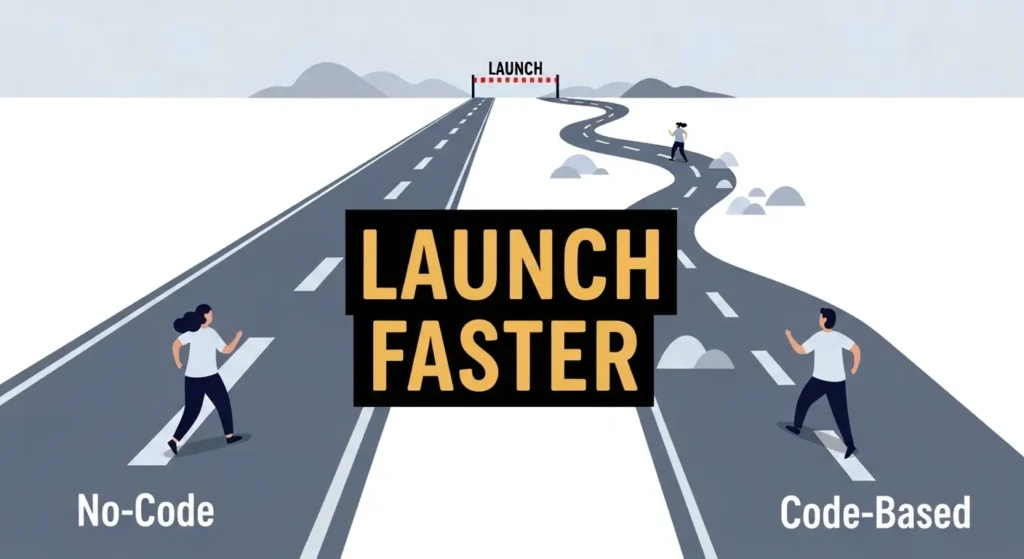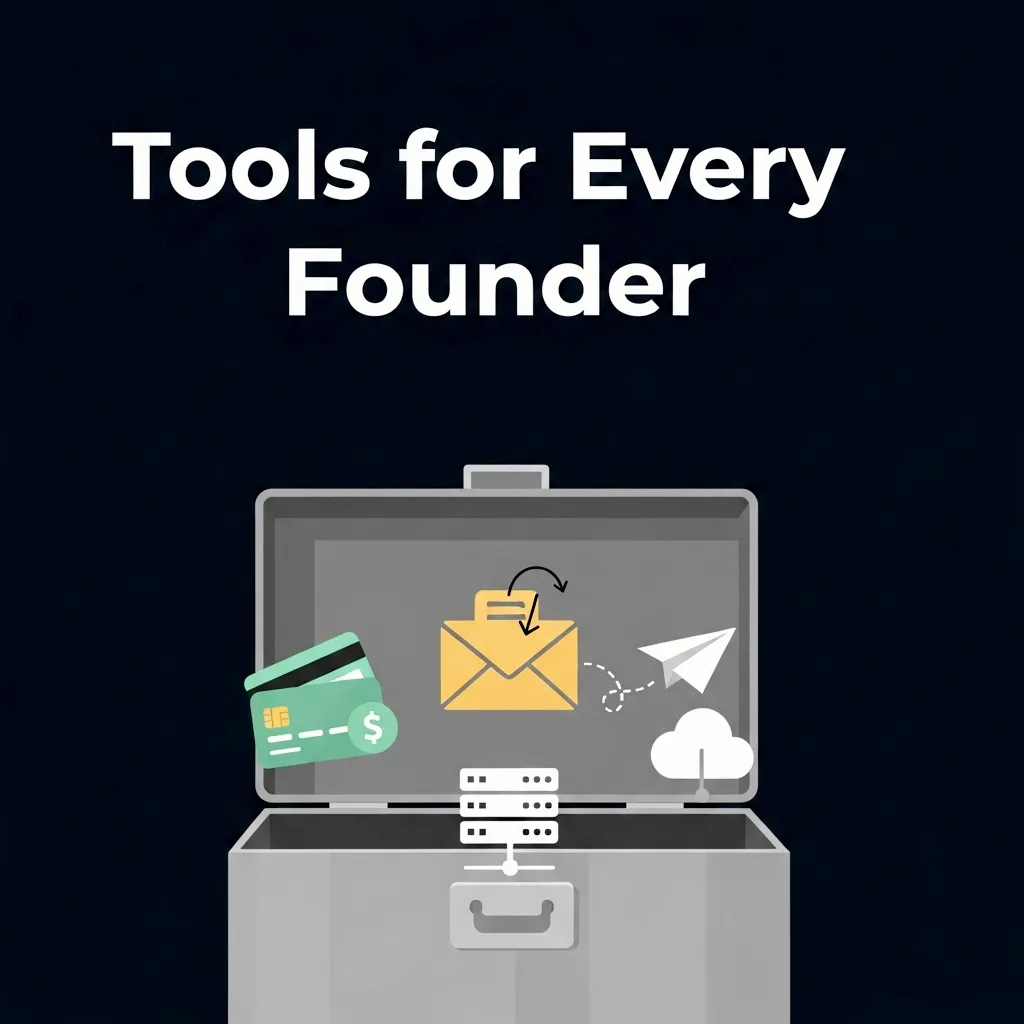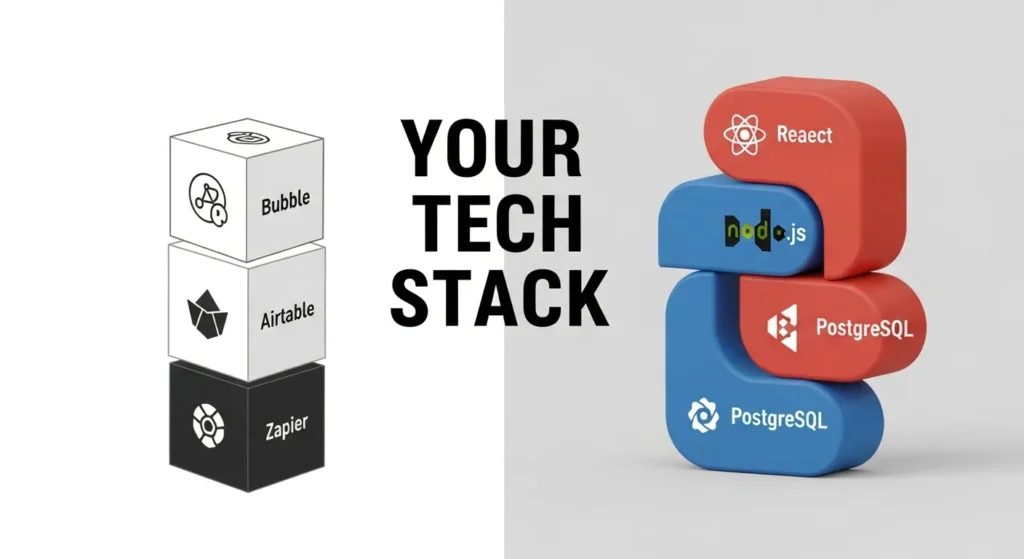Choosing the right tools and tech stack is one of the most important early decisions for your micro SaaS. The right set of tools can make your life easier, help you launch faster, and save you money in the long run. The wrong set can lead to delays and frustration. This guide will walk you through the best micro SaaS platforms and micro saas tech stack options, whether you can code or not.
Selecting the right tools is key to your micro SaaS development journey. For the full picture on building, growing, and even selling your micro SaaS, read our ultimate guide: The Ultimate Guide to Micro SaaS: From Idea to Exit.
The “No-Code” Micro SaaS Tech Stack
You don’t need to be a programmer to build a micro SaaS. The rise of no-code tools has made it possible for anyone to turn an idea into a working product. This approach focuses on using visual builders and pre-made components to create software.
For a no-code micro saas tech stack, you’ll typically use a few key tools for micro saas that handle different parts of the product. Your main building tool might be something like Bubble, which is powerful for creating complex web applications and custom dashboards. Other great options include Softr, which lets you build clean web apps from data in a spreadsheet, or Webflow, which is excellent for building a professional website that can serve as the front end for your application.
For the backend—the part that stores and manages your data—you might use a simple service like Airtable or Google Sheets as your database. To make all these different tools work together, you’ll need an automation tool like Zapier or Make (formerly Integromat). These services act as the glue, allowing your different apps to “talk” to each other without any code. This is the fastest way for a non-technical founder to get to market.

The “Code-Based” Tech Stack
If you are a programmer or you plan to hire one, building with code gives you unlimited flexibility and control. A custom tech stack for micro saas usually has a few main parts: a frontend, a backend, and a database.
- Frontend: This is what your users see and interact with in their web browser. Popular choices are JavaScript frameworks like React or Vue.js because they are fast and great for building modern user interfaces.
- Backend: This is the server that contains your application’s logic and connects to the database. Popular languages and frameworks include Node.js (using a framework like Express.js) because it’s fast and uses the same language as the front end. Other strong contenders are Python (with frameworks like Django or Flask) or Ruby on Rails, both known for making development a bit quicker and more efficient.
- Database: This is where all your user data, settings, and content are stored. A popular choice is PostgreSQL because it is reliable and powerful. MongoDB is another option if you need more flexibility in your data structure.
Your choice of tools can impact development costs, as some languages and platforms have higher fees or more expensive developers than others. For a deeper look into the costs, read our guide on Micro SaaS Development Cost.
Essential Tools for Every Micro SaaS
Regardless of whether you go with a no-code or a code-based approach, there are some essential micro saas tools every founder needs to get their business running smoothly.
- Payment Processing: To accept payments, you’ll need a way to process credit cards and subscriptions. Stripe is the industry standard for this. It’s easy to set up and handles all the complexities of online payments, subscriptions, and invoicing.
- Transactional Email: Your application needs to send automated emails, like password resets, welcome messages, or notifications. Services like SendGrid or Mailgun handle this reliably, ensuring your emails reach the right inbox.
- Marketing/Email Automation: To stay in touch with your users and potential customers, you’ll need a tool for sending newsletters or marketing campaigns. Mailchimp or ConvertKit are popular, easy-to-use options.
- Hosting: Your application needs a home on the internet. Services like Vercel, Netlify, or Render are popular choices because they are easy to use and scale well. If you choose a more complex custom stack, you might use a service like Amazon Web Services (AWS) or Google Cloud Platform (GCP).

When selecting your tools, it’s also important to consider security. The platforms you choose can have a big impact on how secure your application is. We cover this topic in more detail in our guide on Micro SaaS Security and Compliance.
Choosing the Right Tools and Tech Stack
There is no single “best” micro saas tech stack for every project. The right choice depends on your personal skills, the complexity of your product, and how quickly you want to launch.
- If you are a non-technical founder, start with no-code. It’s the fastest way to validate your idea with a real, working product and get your first users.
- If you are a developer, don’t feel like you have to build something complex. Choose the tools you know well and can build with quickly. The goal is to get to market fast, not to over-engineer your first version.
The right set of tools is one that allows you to build a great product, get it into the hands of your users quickly, and make changes easily as you learn more.

